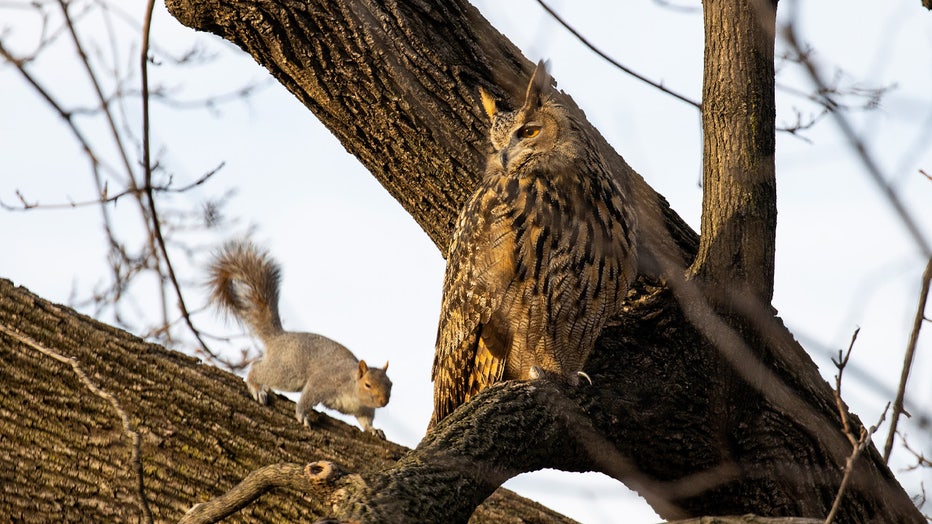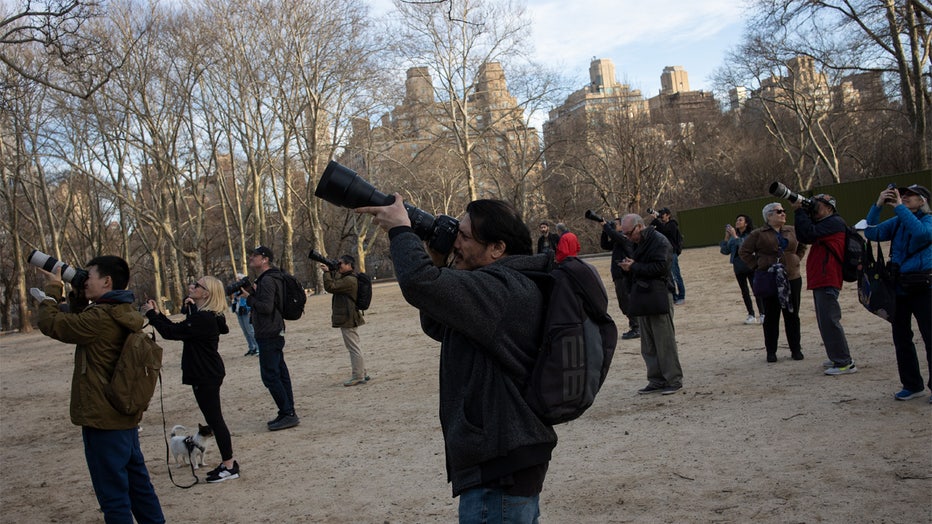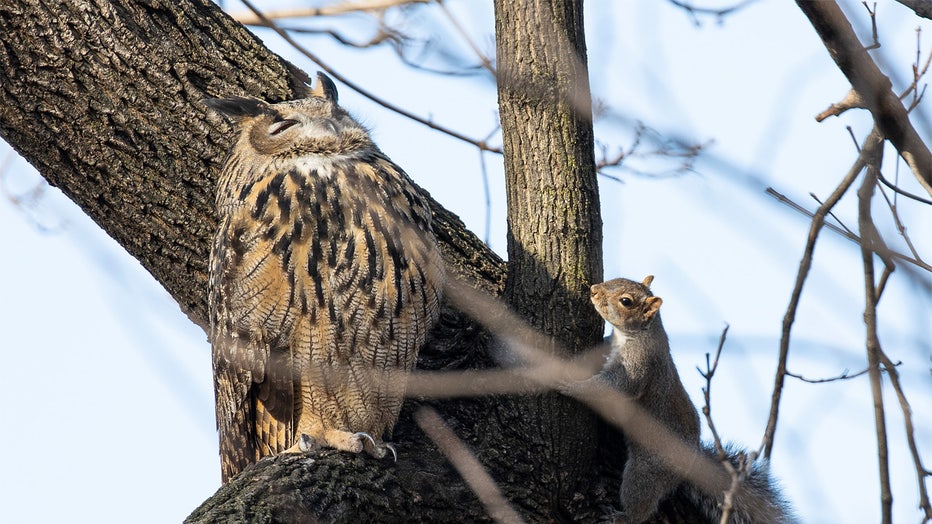Flaco the escaped Central Park Zoo owl can remain in the wilds of NYC

Flaco the escaped Central Park Zoo owl can remain in the wild
Central Park Zoo officials say they are dropping efforts to capture Flaco, a majestic Eurasian eagle-owl that escaped captivity.
NEW YORK - For two weeks, an owl that escaped from Central Park Zoo has flown from treetop to treetop, eluding capture and amassing legions of fans worried about its ability to survive alone in the big city.
Would Flaco, a majestic Eurasian eagle-owl, go hungry because he hadn't developed an ability to hunt while in captivity?
With a collective sigh of relief, the answer was a resounding no: It appears Flaco has regained his killer instincts and is becoming an old hand at swooping down from his lofty perch to feed on the park's bounty of rats.

Owl missing from Central Park Zoo
Officials "continue to have visual contact" with a Eurasian eagle owl that was discovered missing Thursday night from the Central Park Zoo after the exhibit was vandalized, the zoo said in a statement.
As a result, Zoo officials announced that they were suspending recovery operations, at least for now, but will keep a close eye on the owl's health.
"We are going to continue monitoring Flaco and his activities and to be prepared to resume recovery efforts if he shows any sign of difficulty or distress," Zoo officials said in a statement.
The bird's name in Spanish means "skinny," and it seemed he was in danger of living up to his name in the early days of his escape because he hadn't been seen eating. But when he started coughing up fur and bones, it sparked excitement — proof that he had been hunting and eating.

Flaco continues to roost and hunt in Central Park. (Photo by Andrew Lichtenstein/Corbis via Getty Images)
Officials acknowledged that recovering Flaco had proven difficult, especially "since he has been very successful at hunting and consuming the abundant prey in the park."
The Eurasian eagle-owl is one of the larger owl species, with a wingspan of up to 79 inches, according to the Wildlife Conservation Society. They have large talons and distinctive ear tufts.
Despite evidence that Flaco had been dining on rodents, the task of capturing him went on.

Flaco continues to roost and hunt in Central Park. (Photo by Andrew Lichtenstein/Corbis via Getty Images)
Most recently, zoo officials tried to lure Flaco with bait and recordings of eagle-owl calls. He showed some interest but didn't fall for the ruse.
The search for Flaco was launched Feb. 2 when after the discovery that vandals had cut stainless steel meshing at the bird's enclosure.
Flaco has made his rounds of Upper Manhattan but hasn't strayed too far from the park. He flew to the nearby shopping hub of Fifth Avenue, where police officers tried to catch him and failed.
He captivated audiences wherever he went, including a visit to the park's skating rink. Twitter has been aflutter with sightings, and the hashtag #freeflaco, as well as an online petition to keep him free, soon took flight.
"Flaco has been doing well in Central Park. And that’s amazing. He’s made a remarkable move from being a captive owl to being in the wild much faster than anyone would have expected," said David Barrett, who runs the birding Twitter accounts Manhattan Bird Alert, Brooklyn Bird Alert and Bronx Bird Alert.
"He’s catching prey on his own. He continues to fly better and better," he said. "He seems to be enjoying himself out there."
Eurasian eagle-owl's aren't native to North America, so Flaco would have to fly across the ocean to find his own kind in the wild. He was less than a year old when he made his home at the Central Park Zoo in 2010.

Flaco continues to roost and hunt in Central Park. (Photo by Andrew Lichtenstein/Corbis via Getty Images)
Owls are mostly solitary animals and usually only interact with another animal during breeding season.
"Is he going to be lonely out there? That's a good question," said Barrett.
BOBBY CAINA CALVAN, with the Associated Press, helped contribute to this report.

